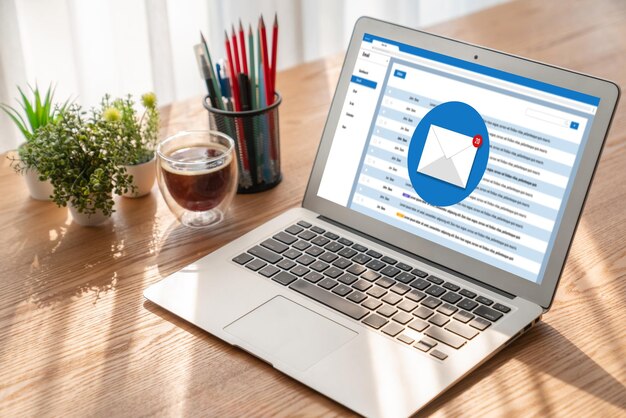Email marketing is one of the most cost-effective and efficient methods for businesses to engage with their audience, nurture leads, and drive sales. For Small and Medium Enterprises (SMEs) in Botswana, email marketing offers a unique opportunity to connect with both potential and existing customers directly in their inboxes. Whether you’re looking to increase brand awareness, promote special offers, or build customer loyalty, email marketing can be an essential tool in your business strategy.
This comprehensive guide covers everything Botswana SMEs need to know about email marketing, including the basics, strategies, tools, and best practices to help you get the most out of your email campaigns.
1. Why Email Marketing Matters for Botswana SMEs
Email marketing allows businesses to reach their target audience directly and personally. It’s one of the most effective ways to communicate with customers and prospects without relying on third-party platforms like social media. Here are a few key reasons why email marketing is crucial for SMEs in Botswana:
- Direct Communication: Emails allow you to communicate directly with customers and prospects, creating a personal connection.
- Cost-Effective: Unlike traditional advertising, email marketing is inexpensive and offers high return on investment (ROI).
- Measurable Results: Email platforms offer detailed analytics, allowing you to track open rates, click-through rates (CTR), and conversions.
- Automation: With the right tools, you can automate email campaigns, saving time and effort while still reaching your audience with relevant messages.
2. Building and Growing Your Email List
The foundation of any successful email marketing campaign is a high-quality email list. It’s essential to grow and maintain a list of subscribers who are genuinely interested in your products or services. Here’s how to build and grow your email list effectively:
- Create a Lead Magnet: Offer an incentive (e.g., free ebooks, discounts, or access to exclusive content) in exchange for users’ email addresses. This can help you attract potential customers and build a valuable email list.
- Opt-in Forms: Ensure that your website and social media pages have clear and easily accessible opt-in forms for users to subscribe to your emails. Make the process as simple as possible.
- Social Media: Promote your email list on your social media channels. Offer your followers exclusive content or discounts if they sign up for your email newsletter.
- Contests and Giveaways: Hosting online contests and giveaways is a great way to gather email addresses from potential customers who are interested in your products or services.
Tip: Avoid purchasing email lists. It’s crucial that your subscribers willingly opt into your emails, as unsolicited emails are likely to be marked as spam, reducing the effectiveness of your campaigns.
3. Choosing the Right Email Marketing Tool
Email marketing tools are essential for organizing, automating, and tracking your campaigns. There are several platforms available, both free and paid, that can help Botswana SMEs run effective email marketing campaigns. Popular options include:
- Mailchimp: Known for its user-friendly interface, Mailchimp offers a free plan for businesses with fewer than 2,000 subscribers. It also provides advanced features like automation, segmentation, and detailed analytics.
- Sendinblue: This platform provides a wide range of tools, including email automation, SMS marketing, and advanced analytics, making it ideal for SMEs looking for an all-in-one marketing solution.
- Constant Contact: With a variety of templates, automation features, and reporting tools, Constant Contact is great for businesses looking to create professional-looking emails.
- Benchmark Email: This tool offers drag-and-drop email design features, A/B testing, and advanced reporting, making it easy for Botswana SMEs to create effective email campaigns.
Tip: Choose an email marketing tool based on your business needs and budget. Most platforms offer free trials, so test out a few to find the best fit.
4. Segmenting Your Email List
Segmentation is the process of dividing your email list into smaller, more targeted groups based on specific criteria. By segmenting your list, you can send more personalized and relevant emails, which can improve engagement and conversions.
Common Segmentation Criteria:
- Demographics: Segment your audience based on age, gender, location, or profession.
- Purchase History: Create groups for customers who have purchased from you before, and send them personalized offers or recommendations.
- Engagement Levels: Separate active subscribers from inactive ones. For example, send special offers or re-engagement emails to inactive subscribers.
- Lead Source: Segment based on how subscribers joined your list, such as through a contest, blog subscription, or social media promotion.
Tip: The more specific you are in your segmentation, the more relevant and effective your email campaigns will be.
5. Crafting Compelling Email Content
Your email content plays a pivotal role in the success of your campaigns. Whether you’re sending a newsletter, promotional offer, or a welcome email, the content must be engaging and aligned with your business objectives.
Here are some tips for creating effective email content:
- Clear Subject Line: Your subject line is the first thing your recipients will see, so make sure it’s attention-grabbing, concise, and relevant. A good subject line should entice the reader to open the email.
- Personalization: Personalize your emails by addressing subscribers by their first name. Personalized emails have higher open and click-through rates.
- Engaging Copy: Write clear, concise, and compelling content that is easy to read. Focus on benefits rather than features and include a strong call to action (CTA).
- Visual Appeal: Use high-quality images and professional designs to make your emails visually appealing. Keep your layout clean and mobile-friendly.
- Test Different Formats: Experiment with various types of emails, such as newsletters, product updates, seasonal offers, and event invitations, to see which works best with your audience.
Tip: A/B testing your subject lines, CTAs, and content can help you understand what resonates most with your audience.
6. Automating Your Email Campaigns
Email automation allows you to send emails based on specific actions or time intervals without having to manually send them every time. This helps save time and ensures that your subscribers receive timely and relevant information.
Common Types of Automated Emails:
- Welcome Emails: Send a warm welcome email to new subscribers, introducing your brand and offering a special discount or valuable content.
- Abandoned Cart Emails: If you run an e-commerce store, set up automated emails to remind customers of abandoned items in their shopping cart.
- Birthday or Anniversary Emails: Send personalized offers or discounts to customers on their birthdays or anniversaries.
- Re-engagement Emails: Reach out to subscribers who haven’t interacted with your emails in a while to reignite their interest.
Tip: Email automation can help you deliver a consistent experience to your subscribers, keeping them engaged with your brand even when you’re busy with other tasks.
7. Analyzing Your Email Marketing Performance
The beauty of email marketing is that you can track its success in real-time. Most email marketing platforms offer built-in analytics tools that let you monitor key metrics and adjust your strategy accordingly.
Important Metrics to Track:
- Open Rate: The percentage of recipients who open your email. A higher open rate indicates that your subject lines and sender name are compelling.
- Click-Through Rate (CTR): The percentage of recipients who click on a link within your email. This shows how effective your email content and CTAs are.
- Conversion Rate: The percentage of recipients who complete a desired action, such as making a purchase or signing up for a webinar.
- Bounce Rate: The percentage of emails that didn’t reach the recipient’s inbox. A high bounce rate could indicate poor list hygiene.
Tip: Regularly review your email metrics to refine your strategy and improve future campaigns.
8. Maintaining Compliance and Best Practices
It’s essential to comply with email marketing regulations to ensure that your emails are delivered successfully and that your business remains trustworthy. In Botswana, this means adhering to the General Data Protection Regulation (GDPR) and other relevant privacy laws.
- Obtain Consent: Always get explicit consent from subscribers before adding them to your email list.
- Provide Unsubscribe Options: Every email should include an easy-to-find unsubscribe link to allow recipients to opt-out if they no longer wish to receive your emails.
- Respect Privacy: Never share your subscribers’ personal data with third parties without their permission.
Tip: Regularly clean your email list to remove inactive or invalid emails, which can affect your deliverability rates.
Email marketing is a powerful tool for Botswana SMEs looking to grow their customer base, improve engagement, and drive sales. By building a high-quality email list, crafting personalized content, automating your campaigns, and analyzing your performance, you can create a successful email marketing strategy that delivers measurable results.
By following the tips and best practices outlined in this guide, you can harness the full potential of email marketing to achieve your business goals and stay ahead of the competition in Botswana’s growing digital landscape.












